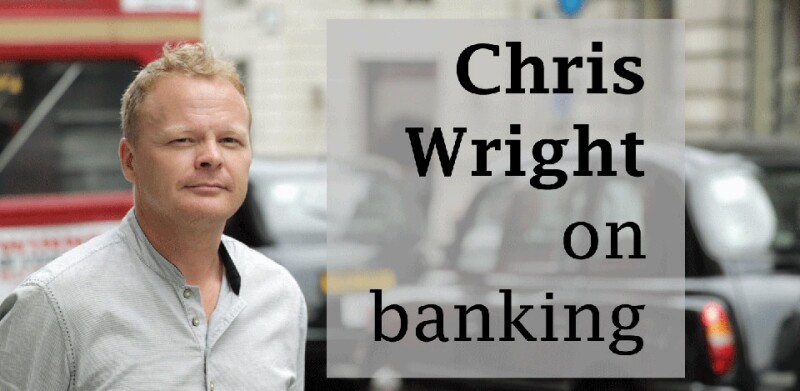
Now, I don’t expect you to give much of a stuff about this, but I’m paying 7.92% on my mortgage in Australia. St George Bank helpfully appends this figure with a vivid red button offering 'Fix this rate?', a button I don’t recall being quite so visible when I was paying 4%.
I will live. But it got me thinking. Australia’s banks are considered safe as houses, largely because they’re built on the safety of houses. But what if they are not all that safe?
There is a sense in Australia and New Zealand – most big Australians operate mortgage books in both markets – that the good times and easy money are gone. This month Fitch put out a detailed report expecting “an increasingly challenging economic environment in 2023” for banks in both those markets.
Fitch, like many analysts in Australia, stops short of calling anything apocalyptic: it expects unemployment to be resilient, limiting the impact on bank asset quality, and (again in common with the industry) thinks rates must now be at or near the top. So, slower economic growth, some pressure on borrowers, but basically OK.
I am not so sure. About two thirds of Australian mortgages are on variable rates. Those borrowers won’t all be in pain, but some certainly will be: they have had 15 years of much lower rates up until a year ago, and many have simply never experienced a rising rate environment, much less stress-tested themselves for one.

A vortex
The cost of living in Australia, as elsewhere in the world, is sky-rocketing, and there is a disconnect between official inflation rates at 7.4% and what individuals perceive in the supermarket, the service station and the pub. But not wages, that’s for sure: the trend instead is for big employers from tech to media, retail to management consultancy to lay people off.
Add in the fact that house prices fell in 2022 and are expected to do the same through 2023, and you begin to see the suggestion of a vortex: people with less money but bigger bills to pay, including rising mortgage payments.
The truism that Australians will give away everything before they surrender their home is just that – true. But you don’t need too many people to get into unexpected strife for this to become a matter of alarm to the banks.
ANZ, Commonwealth Bank of Australia, National Australia Bank and Westpac between them had 73% of total loans in Australia in December 2022, and 86% of the market in New Zealand (considering BNZ as NAB). In all four cases, those loan books are dominated by residential mortgages, with CBA and Westpac nudging 70% of their books.
Fitch notes, correctly, that mortgage-underwriting standards have tightened since the mid 2010s, under a strong regulatory environment, though it says “the rapid interest rate increases may put pressure on some borrowers.”
And this 'some' is the point. Your stereotypical Australian is not only on track with mortgage payments, but ahead of them with offset payments. But new borrowers typically are not.
“It is borrowers in this cohort that bought in late 2021 and early 2022 when interest rates were at their lowest and house prices peaked that appear most at risk in a higher rate environment,” the ratings agency says.
Property pain
This brings us to another point: it is hellish difficult for young people to get a foothold in the property markets of Sydney or Melbourne. It is not that different from London or New York. You either live with your parents for ever, suck up a two-hour commute, or throw absolutely everything you have at hitting that deposit and locking yourself into a mortgage. If you did that in late 2021, you are probably now in pain. If you lose your job in that position, you are in danger of losing the home too.
The Australian housing market does have a tendency to surprise on the upside. But I am a bit sceptical

In Australia, the definition of 'mortgage stress' is one who puts more than 30% of their pre-tax income into mortgage payments. Australian research company Roy Morgan says that almost a quarter of all Australian mortgage holders – 23.9%, covering 1.1 million people – were at risk of mortgage stress in the three months to December. The situation will certainly have got worse since then.
“The greatest impact on an individual's or household’s ability to pay their mortgage is not interest rates, it’s if they lose their job or main source of income,” adds Roy Morgan.
Some of Australia’s best thinkers are unsure about the positive narrative around Australian housing.
“The Australian housing market does have a tendency to surprise on the upside,” says Shane Oliver, chief economist at AMP Capital. “But I am a bit sceptical.”
He believes bargain hunters and fear of missing out will bring some demand to housing, as will immigration. But given the rate environment, “the capacity to borrow and pay being well down from year-ago levels, and the combination of the fixed mortgage cliff which will see 880,000 mortgages face more than a doubling in their interest bill this year and the increasing risk of recession with much higher unemployment, we continue to see more weakness ahead.”
Boring
None of this suggests a systemic threat to Australian banking. The big four are prudent and well-provisioned. Lenders mortgage insurance, protecting the lender, is quite common for those struggling to scrabble together a 20% deposit, and mortgage protection insurance is also widespread but by no means universal for borrowers.
But analysts expect the earnings metrics across the big four to weaken progressively for years from here, as higher funding costs and competition for loans further squeeze net interest margins.
It is reasonable to ask if the deliberately boring approach of Australian banking, in which international expansion and daring new ideas are eschewed in the face of dull and reliable mortgages, is fit for purpose in a changing environment.
